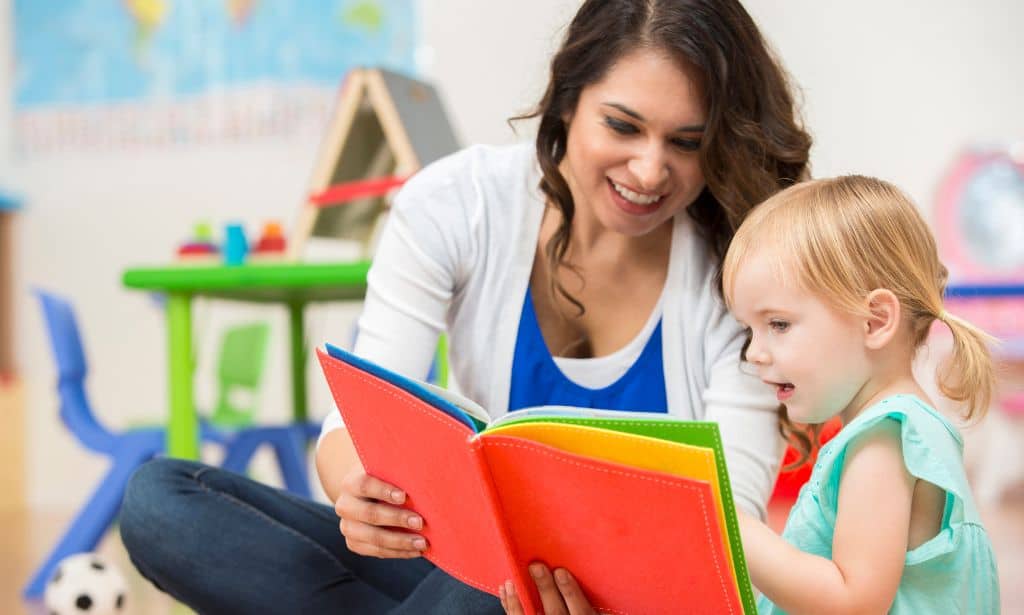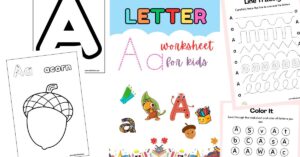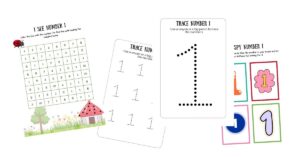When I had my firstborn, I was pretty clueless about how to keep her busy. I needed to get the day’s work done, do house chores, and get a little time to rest. But, most importantly, I wanted to ensure my child was ready for school. That’s how I found and fell in love with activity books. So, what is it, and why should your child get one?
An activity book refers to a type of book typically aimed at children, which primarily has interactive content such as puzzles, coloring, quizzes, and tracing made for education or entertainment purposes.
Children usually write in the activity book itself. Some books contain non-interactive elements, such as narratives, while others have a mixture of interactive and non-interactive elements.
When to Introduce Activity Books
I started using activity books as soon as she could hold a crayon, but I later learned you could introduce these books much earlier.
The best age is between 3 to 6 months, or around the time you notice your child can focus on items that interest them, such as toys, spoons, and other interesting objects. At this age, the best activity is to read to your child. In fact, you should schedule reading time into their daily routine the same way you schedule bath time, meals, playtime, and sleep.
This is important because, from an early age, your child will learn to love and enjoy books. Thus, it won’t be a struggle when they are older and start school. Think of it as creating a habit. And if you know anything about habits, it’s that the more you do something, the easier it gets, eventually becoming second nature.

Why Kids Need Activity Books
There are numerous benefits of introducing activity books. The obvious one is that it helps set your child up to learn, giving them an easy time when they start school. Schoolwork can be pretty boring for kids, but by using activity books, the pressure to learn is lifted. They become so engrossed in solving puzzles and coloring that they forget they are learning. Other reasons are:
1. Helps Improve Hand-Eye Coordination
Hand-eye coordination is the ability to carry out activities that need you to use your hands and eyes simultaneously, especially activities that use the information your eyes perceive to guide your hands to do certain movements.
For kids, this is a skill they can only learn with time. Studies say that kids fully develop this skill between ages 6 and 9. By introducing activity books, your child starts learning how to strengthen their hand-eye coordination.
At first, your child may color as they wish, but eventually, they learn to color within the line. Your child also needs to think of the color they will use for certain parts of the picture and imagine how the page will look once it’s complete. This helps them adjust their movements based on what they see.
2. Improves Concentration
Kids are naturally blessed with a burst of energy and can hardly sit still. Developmental experts say that kids should concentrate for two to three minutes per year of their age. For instance, a two-year-old should focus on a task for about 4 to 6 minutes, while a 4-year-old should focus for about eight to twelve minutes.
Activity books have simple yet enjoyable tasks that drive your child to sit still and complete the task. Don’t worry if they can only concentrate for a few minutes before being distracted by another activity. Remember, like other skills; they learn concentration over time.
By scheduling the activity into their daily routine, your child will eventually learn to sit and finish the task before moving to a different activity.
3. Develops Fine Motor Skills
Fine motor skills is the ability to make movements by using the small muscles in your hands and wrists. When your child holds a pencil, crayon, or scissors, they use fine motor skills. The more they use these muscles, the stronger the muscles become. This helps them easily perform tasks such as eating, brushing their teeth, grasping objects, and writing.
4. Reduces Screen Time
Research by the world’s leading brain scientist Patricia Kuhl says babies under one year do not learn from a machine. Babies learn best when interacting with a live human and get zero learning from screens. Kuhl concluded this by studying more than 4000 babies each year.
It’s understandable why the World Health Organization recommends no screen time for kids under 2 years and limits screen time to one hour a day for kids between 2 and 4. The best alternative for extended screen time is to include activities in your child’s schedule, which is where activity books come in.
While it’s difficult to complete with a screen, you can schedule screen time the same way you do other activities. Scheduling teaches your child there is a time for everything and gives them a sense of stability.

5. Helps in cognitive development
School work is important for my husband and me. If it wasn’t for education, we would probably be having a hard time raising our family. With a good foundation in education, we were able to get where we are. That’s why I needed to help my kids get a headstart in schoolwork. Through activity books, my girls could recognize some numbers, letters, shapes, and colors by the time they started kindergarten.
It has also been proven that activities like drawing help your child improve their memory and easily understand concepts they learn in class. Through activities, your child can perform better in class.
6. Great Pass Time During Travel
This is probably one of the best things to happen to my family and me. Travelling was always coupled with tons of screen time and ensuring all gadgets had enough charge. After introducing activity books, we started cutting back on screentime and giving the kids puzzles, coloring books, and quizzes instead. I noticed my oldest would help her small sister when she was stuck, and they often played together.
This is important to me for two reasons. First, they were not bored, and second, they learned to collaborate and reduced sibling rivalry even though just a little. Yes, they still fight over gadgets.
7. Build Self-Expression and Self-Esteem
Interactive activity books are designed to encourage kids to express themselves through paper. Your child can think, feel, and use their imagination to create the world as they want it to be. Don’t be surprised when you see a pink sky and green clouds.
That’s not all. Think back to when you completed a task and how great it felt. That’s the same thing your child feels when they finish coloring a picture, a puzzle, or a quiz. This feeling helps them build their self-esteem and creates an avenue for your child to take on more complex tasks.
8. Great for Bonding With Others
Activity books forced me to schedule time for my kids. I’m a busy mom running a home business while caring for my little ones and household. It’s tough to balance everything, but I had to be involved if I wanted to help my kids get a headstart.
It was hard to leave other activities at first, but eventually, I learned to enjoy playing with and listening to my munchkins. I even got a coloring book for myself, so I could destress. Working with them helped us bond and build a friendship. When I wasn’t available, my kids would continue without me, bonding and building their relationships.
9. Build Your Child’s Interest
Kids are interested in different subjects, from math to writing, reading, painting, and foreign languages. Luckily, activity books come in all shapes and sizes and are made to fit your child’s interests. If your kid loves math, you will get tons of activity books on the subject, which can hold their interest for hours.
I preach activity books to other parents because I have seen all these benefits in my kids. My little one, for example, is pretty hyperactive and rarely focuses on one activity. After introducing activity books and learning to play the piano in her schedule, her concentration span has greatly improved. If your child needs help in any of these areas, then activity books are the way to go.




